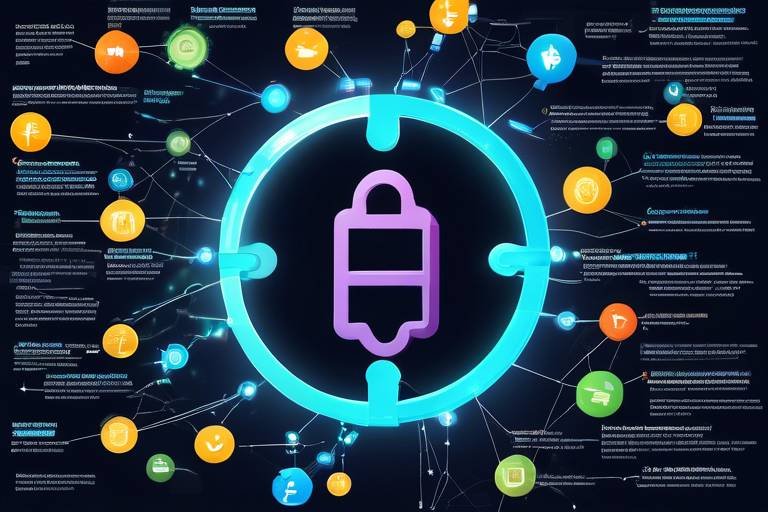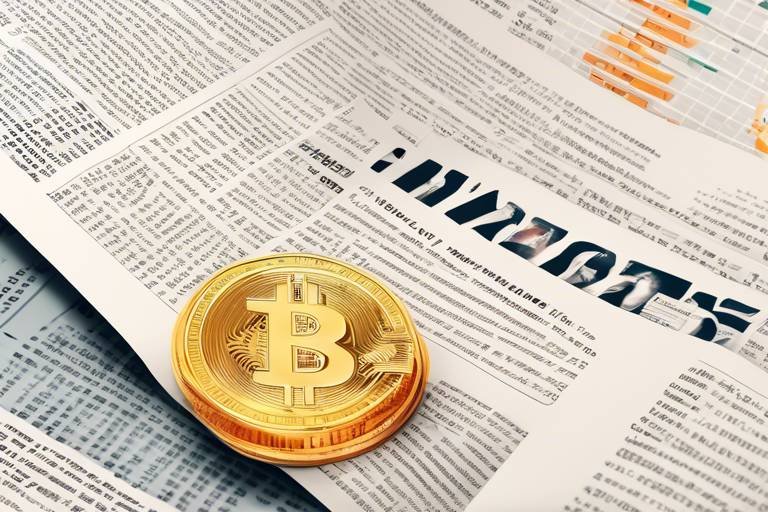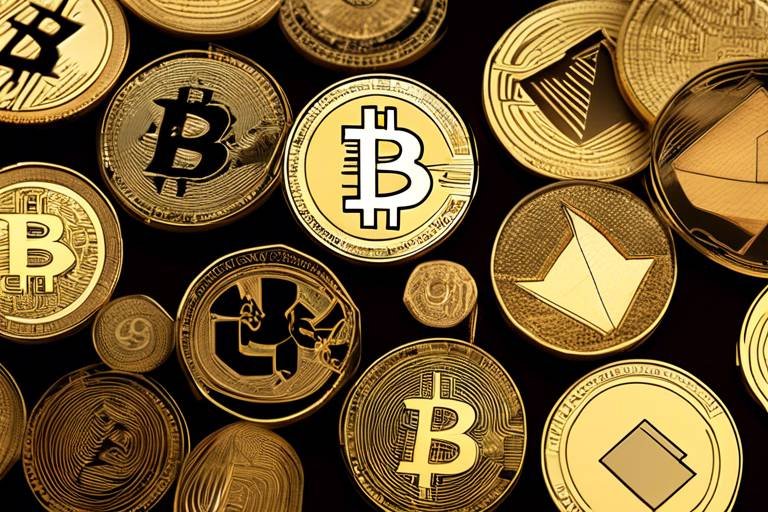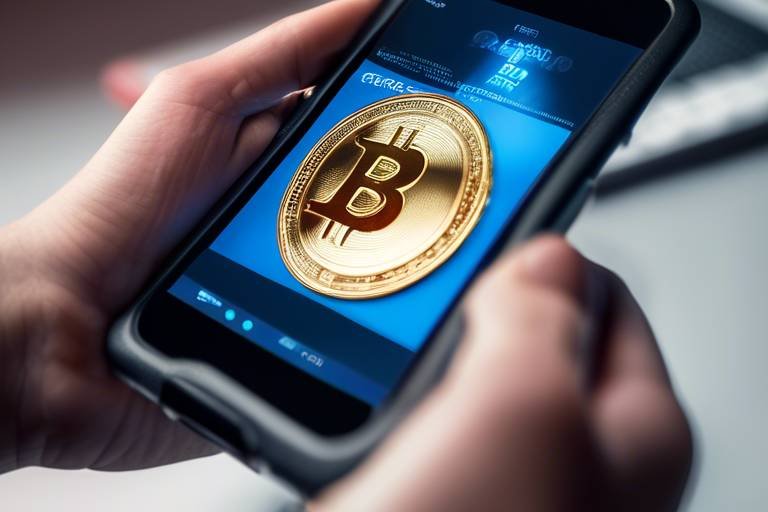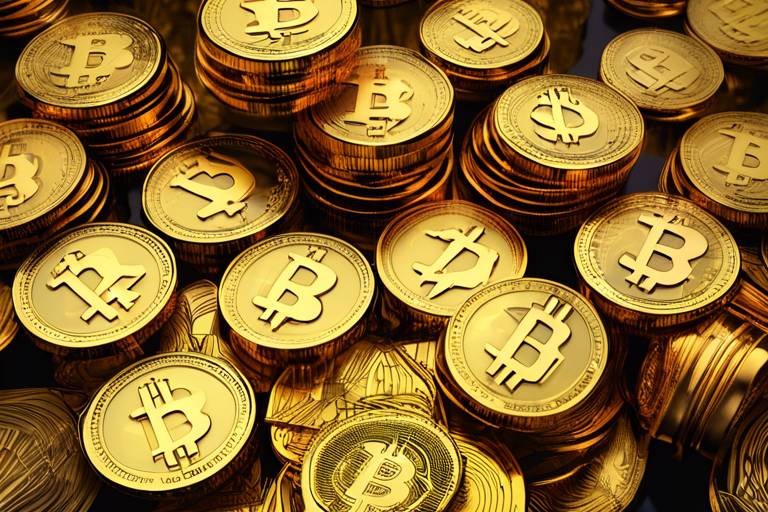Evaluating the Future of Cross-Chain Technologies
In the ever-evolving world of blockchain, the term cross-chain technology is becoming a buzzword that resonates with developers, investors, and enthusiasts alike. As we step into a future where different blockchain networks need to interact seamlessly, understanding the implications of these technologies becomes paramount. Imagine a world where Bitcoin, Ethereum, and other cryptocurrencies can communicate effortlessly, allowing for a frictionless exchange of value and information. This isn't just a dream; it's the potential reality that cross-chain technologies promise.
The essence of cross-chain technology lies in its ability to enhance interoperability. Think of it as a universal translator for blockchains, enabling various networks to share data and conduct transactions without barriers. As the blockchain ecosystem grows, the need for such integration becomes increasingly critical. Without interoperability, we risk creating isolated silos of information and value, which could stifle innovation and user adoption. Just as the internet transformed communication by connecting disparate systems, cross-chain technologies could revolutionize the blockchain landscape.
As we delve deeper into this topic, we will explore the current state of cross-chain solutions, their benefits, and the challenges they face. From atomic swaps that allow for peer-to-peer transactions without intermediaries to wrapped tokens that bridge different ecosystems, each solution plays a vital role in fostering a more interconnected blockchain environment. Moreover, we will examine how the rise of Decentralized Finance (DeFi) is pushing the boundaries of what cross-chain technologies can achieve, ultimately reshaping the financial landscape.
In this article, we aim to provide a comprehensive overview of cross-chain technologies, highlighting their significance and the transformative potential they hold. As we navigate through various solutions and their implications, we will also touch upon the associated risks and security concerns that come with this exciting frontier. So, buckle up as we embark on this journey to evaluate the future of cross-chain technologies!
Interoperability is crucial for the blockchain ecosystem, enabling different networks to communicate. This section discusses why seamless integration between chains is vital for the growth of decentralized applications and user adoption.
Various cross-chain solutions are currently available, each with unique features and limitations. This section reviews popular technologies like atomic swaps, wrapped tokens, and bridges, highlighting their roles in enhancing blockchain interoperability.
Atomic swaps allow for peer-to-peer exchanges between different cryptocurrencies without intermediaries. This subheading delves into how atomic swaps function and their implications for decentralized trading.
Atomic swaps offer advantages such as reduced fees and increased privacy. This section outlines these benefits and how they contribute to a more decentralized trading environment.
Despite their advantages, atomic swaps face challenges like liquidity and technical complexity. This part discusses these hurdles and potential solutions to enhance their usability.
Wrapped tokens are essential for bridging different blockchain ecosystems. This subheading explains how wrapped tokens work and their significance in facilitating cross-chain transactions.
DeFi is a driving force behind the adoption of cross-chain technologies. This section examines how DeFi platforms leverage interoperability to enhance user experiences and broaden their market reach.
Several DeFi platforms are now incorporating cross-chain functionalities. This subheading explores notable examples and how they are reshaping the financial landscape.
As cross-chain technologies evolve, they also introduce new risks. This section discusses potential security vulnerabilities and how developers can mitigate these risks to protect users and assets.
- What are cross-chain technologies?
Cross-chain technologies enable different blockchain networks to communicate and interact, facilitating transactions and data sharing.
- Why is interoperability important?
Interoperability allows for seamless integration between blockchain networks, fostering innovation and user adoption.
- What are atomic swaps?
Atomic swaps are a method for exchanging cryptocurrencies directly between users without the need for an intermediary.
- How do wrapped tokens work?
Wrapped tokens are assets that represent another cryptocurrency on a different blockchain, allowing for cross-chain transactions.
- What risks are associated with cross-chain technologies?
Potential risks include security vulnerabilities, liquidity issues, and technical complexities that could hinder usability.

The Importance of Interoperability
This article explores the emerging landscape of cross-chain technologies, their potential impact on blockchain interoperability, and how they may shape the future of decentralized applications and finance.
When we talk about the future of blockchain, one word that keeps popping up is interoperability. But why is it so crucial? Think of the blockchain ecosystem as a bustling city, with each blockchain representing a different neighborhood. If the neighborhoods can’t communicate with each other, then people (or in this case, data and assets) can’t move freely. This lack of communication stifles growth and innovation. Interoperability enables different blockchain networks to work together seamlessly, allowing them to share information and value. Without it, we risk creating isolated silos that hinder the full potential of decentralized applications (dApps) and user adoption.
Imagine trying to use a payment app that only works with one specific bank. Frustrating, right? That’s exactly what happens in the blockchain world without interoperability. By enabling seamless integration between various chains, we open the door to a myriad of possibilities. For instance, users can transfer assets across platforms, participate in diverse dApps, and enjoy a more cohesive experience. This not only enhances user experience but also encourages wider adoption of blockchain technologies.
Moreover, interoperability can significantly reduce transaction costs and times. When different blockchains can communicate directly, it eliminates the need for costly intermediaries, streamlining processes and making transactions more efficient. This could lead to a more democratized financial system, where everyone has equal access to opportunities regardless of their blockchain of choice.
As we delve deeper into the world of cross-chain technologies, it’s essential to understand that they are not just a trend; they are a necessity. The blockchain landscape is evolving, and the demand for interconnected systems is growing. The more we can facilitate communication between different networks, the more robust and vibrant the entire ecosystem will become.
In conclusion, interoperability is not just a technical requirement; it is the backbone of a thriving blockchain ecosystem. By fostering connections between various chains, we can unlock unprecedented levels of innovation, collaboration, and growth. As we move forward, the focus on enhancing interoperability will be a critical factor in determining the success of decentralized applications and the broader adoption of blockchain technology.
Various cross-chain solutions are currently available, each with unique features and limitations. This section reviews popular technologies like atomic swaps, wrapped tokens, and bridges, highlighting their roles in enhancing blockchain interoperability.
Atomic swaps allow for peer-to-peer exchanges between different cryptocurrencies without intermediaries. This subheading delves into how atomic swaps function and their implications for decentralized trading.
Atomic swaps offer advantages such as reduced fees and increased privacy. This section outlines these benefits and how they contribute to a more decentralized trading environment.
Despite their advantages, atomic swaps face challenges like liquidity and technical complexity. This part discusses these hurdles and potential solutions to enhance their usability.
Wrapped tokens are essential for bridging different blockchain ecosystems. This subheading explains how wrapped tokens work and their significance in facilitating cross-chain transactions.
DeFi is a driving force behind the adoption of cross-chain technologies. This section examines how DeFi platforms leverage interoperability to enhance user experiences and broaden their market reach.
Several DeFi platforms are now incorporating cross-chain functionalities. This subheading explores notable examples and how they are reshaping the financial landscape.
As cross-chain technologies evolve, they also introduce new risks. This section discusses potential security vulnerabilities and how developers can mitigate these risks to protect users and assets.
- What is blockchain interoperability?
Blockchain interoperability refers to the ability of different blockchain networks to communicate and share data seamlessly, enhancing the overall functionality of decentralized applications.
- Why is interoperability important for DeFi?
Interoperability allows DeFi platforms to access a wider range of assets and services, improving user experience and increasing market opportunities.
- What are the challenges of achieving interoperability?
Challenges include technical complexity, security vulnerabilities, and the need for standardized protocols across different blockchain networks.

Current Cross-Chain Solutions
In the rapidly evolving world of blockchain technology, cross-chain solutions have emerged as a pivotal element in enhancing the connectivity and functionality of various blockchain networks. These solutions facilitate seamless communication between different chains, allowing for greater interoperability and user engagement. The significance of these technologies cannot be overstated, as they are essential for unlocking the full potential of decentralized applications (dApps) and decentralized finance (DeFi). Let's delve deeper into some of the most popular cross-chain solutions available today, each with its unique features and limitations.
One of the most notable methods for achieving cross-chain interoperability is through atomic swaps. These allow users to exchange cryptocurrencies from different blockchains directly, without the need for intermediaries. Imagine being able to trade Bitcoin for Ethereum without going through a centralized exchange; that's the power of atomic swaps. However, while this technology offers exciting possibilities for peer-to-peer trading, it also presents challenges such as liquidity issues and technical complexities that can hinder user adoption.
Another significant player in the cross-chain arena is the concept of wrapped tokens. Wrapped tokens are essentially representations of a cryptocurrency from one blockchain that exists on another blockchain. For instance, Wrapped Bitcoin (WBTC) allows Bitcoin holders to utilize their assets within the Ethereum ecosystem. This bridging of different blockchain networks not only enhances liquidity but also opens up new avenues for users to engage with various dApps across different platforms. However, the process of wrapping and unwrapping tokens can introduce its own set of complexities and risks that users must navigate.
Additionally, cross-chain bridges have gained traction as a solution for transferring assets between different blockchain networks. These bridges act as intermediaries, allowing users to move tokens from one blockchain to another seamlessly. While they simplify the process and enhance the user experience, they also raise security concerns, as vulnerabilities in the bridge could expose users to the risk of losing their assets.
To summarize, the current landscape of cross-chain solutions is rich and varied, with each technology offering distinct advantages and challenges. The table below outlines some key characteristics of these solutions:
| Cross-Chain Solution | Key Features | Limitations |
|---|---|---|
| Atomic Swaps | Peer-to-peer exchanges, no intermediaries | Liquidity issues, technical complexity |
| Wrapped Tokens | Bridges different ecosystems, enhances liquidity | Complex wrapping/unwrapping process |
| Cross-Chain Bridges | Facilitates asset transfers, user-friendly | Security vulnerabilities |
As we continue to explore the future of cross-chain technologies, it's clear that these solutions play a crucial role in shaping the blockchain ecosystem. The ongoing development and refinement of these technologies will not only enhance interoperability but also foster a more inclusive environment for users and developers alike. With the right focus on security and usability, the potential for cross-chain solutions is boundless, paving the way for a more interconnected and robust decentralized future.
- What are cross-chain solutions? Cross-chain solutions are technologies that enable different blockchain networks to communicate and interact with one another, facilitating the transfer of data and assets.
- How do atomic swaps work? Atomic swaps allow users to exchange cryptocurrencies directly between different blockchains without the need for an intermediary, ensuring a secure and trustless transaction.
- What are wrapped tokens? Wrapped tokens represent a cryptocurrency from one blockchain on another blockchain, allowing users to utilize their assets across different platforms.
- What are the risks associated with cross-chain technologies? Risks include security vulnerabilities, liquidity issues, and technical complexities that can impact user experience and asset safety.

Atomic Swaps
Imagine a world where you can trade your favorite cryptocurrencies without needing a middleman, like a bank or an exchange. This is where come into play, revolutionizing the way we think about cryptocurrency trading. Atomic swaps are a groundbreaking technology that allows for peer-to-peer exchanges between different cryptocurrencies directly, without the need for an intermediary. This means that you can trade Bitcoin for Ethereum, for example, without having to trust a third party to hold your funds. It’s like trading baseball cards with a friend — you both know what you have and what you want, so you just swap!
The magic behind atomic swaps lies in a clever mechanism known as Hash Time-Locked Contracts (HTLC). This technology ensures that the trade is executed only if both parties fulfill their obligations. If one party fails to complete the trade within a specified time frame, the transaction is automatically canceled, and both parties get their assets back. This safety net is crucial because it builds trust between users who may not know each other. In simpler terms, it’s like saying, “I’ll give you my card if you give me yours, but if you back out, I get my card back.”
Atomic swaps are not just a cool concept; they have real-world implications for how we trade cryptocurrencies. By eliminating the need for centralized exchanges, users can enjoy several benefits:
- Lower Fees: Since there’s no intermediary, transaction fees are significantly reduced, which is a win for traders.
- Increased Privacy: Atomic swaps allow users to trade without revealing their identity, enhancing privacy and security.
- Enhanced Control: Users maintain control over their funds throughout the entire process, reducing the risk of hacks associated with centralized exchanges.
However, while atomic swaps sound like a dream come true, they do come with their own set of challenges. One major hurdle is liquidity. For atomic swaps to work effectively, there needs to be a sufficient amount of both cryptocurrencies available for trading. If there aren’t enough buyers or sellers, it can become difficult to execute trades efficiently. Additionally, the technical complexity of setting up atomic swaps can be daunting for the average user, which may hinder widespread adoption.
In conclusion, atomic swaps represent a significant leap toward a more decentralized and user-friendly trading environment. As the technology matures and solutions for liquidity and usability challenges are developed, we may see a future where trading cryptocurrencies is as easy as flipping a coin. So, are you ready to dive into the world of atomic swaps and experience the freedom of decentralized trading?

Benefits of Atomic Swaps
Atomic swaps are revolutionizing the way we think about trading cryptocurrencies. Imagine being able to exchange one type of digital currency for another without the need for a middleman—no exchanges, no waiting times, and no excessive fees. This is the essence of atomic swaps, and it brings several significant benefits to the table.
One of the most appealing aspects of atomic swaps is the reduction in fees. Traditional exchanges often impose hefty transaction fees, which can eat into your profits. With atomic swaps, these costs are minimized since the process occurs directly between users. This means that you can keep more of your hard-earned cryptocurrency in your wallet instead of handing it over to an exchange. Additionally, because there are no intermediaries involved, the transaction fees can be as low as a fraction of a cent, which is a game changer for frequent traders.
Another compelling benefit is increased privacy. When you use centralized exchanges, you often have to provide personal information, which can compromise your privacy. Atomic swaps, on the other hand, allow you to trade directly with another user without revealing your identity or transaction details. This level of anonymity is especially appealing to users who prioritize their privacy and security in the ever-evolving world of cryptocurrency.
Moreover, atomic swaps contribute to a more decentralized trading environment. In a world where centralized exchanges can be susceptible to hacks and regulatory pressures, atomic swaps empower users to take control of their own trades. This decentralization not only enhances security but also encourages a more resilient trading ecosystem where users are less dependent on third-party platforms.
To illustrate the advantages of atomic swaps, let's consider a simple example. Suppose you want to exchange Bitcoin for Ethereum. With traditional methods, you would need to go through a centralized exchange, which may charge fees, require personal information, and take time to process your request. In contrast, an atomic swap allows you to engage in this exchange directly with another user who has Ethereum. The transaction is executed through smart contracts that ensure both parties fulfill their end of the bargain, creating a fair and trustless environment.
In conclusion, atomic swaps are paving the way towards a more efficient, private, and decentralized trading landscape. By eliminating intermediaries, reducing fees, and enhancing user privacy, they are not just a technological advancement; they represent a fundamental shift in how we approach cryptocurrency trading.

Challenges of Atomic Swaps
While atomic swaps present an exciting frontier in the world of cryptocurrency exchanges, they are not without their challenges. One of the primary hurdles is liquidity. For atomic swaps to work effectively, there needs to be sufficient liquidity on both chains involved in the transaction. If one party cannot find a counterpart willing to exchange their tokens, the swap cannot occur. This issue can limit the practicality of atomic swaps, particularly for lesser-known or less frequently traded cryptocurrencies.
Another significant challenge is the technical complexity involved in executing atomic swaps. Users need to understand the underlying technology and how to navigate the process. This can be daunting for individuals who may not be tech-savvy, thereby limiting the user base. Additionally, the requirement for both parties to have compatible wallets adds another layer of complexity. If a user is not familiar with the wallets that support atomic swaps, they may find themselves unable to participate.
Moreover, the timing of the swaps can pose a challenge. Atomic swaps typically have a time limit; if the swap is not completed within this timeframe, the transaction will fail, and funds will revert to their original owners. This can be particularly problematic in volatile markets where prices fluctuate rapidly. If the swap fails due to timing issues, users may miss out on favorable rates, leading to frustration and potential loss of funds.
Security is another critical concern. Although atomic swaps are designed to be trustless, they are not entirely immune to risks. Users must ensure they are using reputable platforms and wallets to avoid falling victim to scams or hacks. The decentralized nature of atomic swaps can also lead to vulnerabilities if not implemented correctly, which can expose users to potential losses. In this regard, developers must focus on enhancing security measures to protect users and their assets.
In summary, while atomic swaps offer a promising solution for decentralized trading, several challenges need to be addressed. From liquidity and technical barriers to timing constraints and security concerns, these issues must be tackled to fully realize the potential of atomic swaps in the cryptocurrency ecosystem. As the technology evolves, we can expect improvements that will make atomic swaps more accessible and secure for the average user.
- What are atomic swaps? Atomic swaps are a method of exchanging cryptocurrencies directly between users without the need for a centralized intermediary.
- How do atomic swaps enhance privacy? Since atomic swaps do not require a third party, they allow users to trade directly, which helps maintain their privacy.
- Are atomic swaps safe? While they are designed to be secure, users must take precautions by using trusted wallets and platforms to mitigate risks.
- What cryptocurrencies can be used in atomic swaps? Atomic swaps can be conducted between any two cryptocurrencies that support the necessary protocols, but liquidity can be an issue for less popular coins.

Wrapped Tokens
Wrapped tokens are an innovative solution designed to enhance the interoperability between different blockchain ecosystems. Imagine having a bridge that allows you to cross from one island to another without losing your belongings. That's essentially what wrapped tokens do—they allow users to take assets from one blockchain and utilize them on another while maintaining the original asset's value. The concept revolves around creating a token that is 'wrapped' in a smart contract, which represents an asset from a different blockchain. For instance, when you wrap Bitcoin (BTC) to use it on the Ethereum network, you receive Wrapped Bitcoin (WBTC), which is pegged to the value of BTC. This process opens up a world of possibilities for users, allowing them to engage in various decentralized applications (dApps) that were previously out of reach.
The significance of wrapped tokens cannot be overstated. They serve as a vital link in the decentralized finance (DeFi) ecosystem, enabling users to leverage assets across multiple platforms. By wrapping tokens, users can participate in liquidity pools, yield farming, and other DeFi activities that require different types of assets. This flexibility not only enhances user experience but also increases liquidity in the markets. For example, when WBTC is used in DeFi protocols, it allows Bitcoin holders to earn interest or trade their assets without needing to sell their Bitcoin. In essence, wrapped tokens democratize access to various financial tools and services, making the blockchain landscape more inclusive.
However, while wrapped tokens present exciting opportunities, they also come with their own set of challenges. Users must trust the custodians who manage the wrapping process, as these entities hold the original assets. If a custodian were to encounter issues, it could lead to complications for users. Moreover, the smart contracts that facilitate the wrapping process must be secure and free from vulnerabilities to prevent potential hacks or exploits. Therefore, it is crucial for users to conduct thorough research and understand the risks involved before engaging with wrapped tokens.
In conclusion, wrapped tokens are a powerful tool in the blockchain arsenal, enabling seamless asset transfer and interaction across different networks. As the demand for cross-chain functionality continues to grow, wrapped tokens will likely play an increasingly important role in shaping the future of decentralized finance and blockchain interoperability. They not only enhance liquidity but also empower users to maximize their asset potential in a rapidly evolving digital landscape.

The Role of Decentralized Finance (DeFi)
Decentralized Finance, or DeFi, is like a breath of fresh air in the traditional financial landscape. Imagine a world where you can lend, borrow, and trade without the interference of banks or financial institutions. That’s the magic of DeFi! It leverages the power of blockchain technology to create an open, permissionless financial system accessible to anyone with an internet connection. This revolution is not just about replacing existing financial systems; it’s about enhancing the way we interact with money, assets, and value.
One of the most exciting aspects of DeFi is its ability to utilize cross-chain technologies. By enabling seamless interactions between different blockchain networks, DeFi platforms can offer users a broader range of services and improved liquidity. This interoperability allows users to move assets across various chains, unlocking new opportunities for investment and financial strategies. For instance, a user can take advantage of the best interest rates on one blockchain while holding assets on another, all without the need for cumbersome exchanges or intermediaries.
Moreover, the integration of cross-chain functionalities in DeFi platforms can lead to enhanced user experiences. Imagine being able to trade tokens from Ethereum on a Binance Smart Chain platform without any hassle! This not only simplifies the user experience but also broadens the market reach for DeFi projects, attracting a diverse user base. As a result, we see a surge in innovative financial products, such as cross-chain liquidity pools and synthetic assets, that cater to the needs of a global audience.
However, with great power comes great responsibility. While the potential of cross-chain DeFi is immense, it also brings with it a set of challenges and risks. Security is a paramount concern, as the more complex the interactions between different chains, the more potential vulnerabilities can arise. Developers must ensure that their platforms can withstand attacks and protect users' assets. This requires a concerted effort to implement robust security measures and conduct thorough audits.
In conclusion, the role of DeFi in the context of cross-chain technologies is pivotal. It not only enhances the functionality and accessibility of financial services but also paves the way for a more inclusive financial ecosystem. As we continue to explore the possibilities of cross-chain interactions, the future of finance looks promising, filled with opportunities for innovation and growth. The question remains: are you ready to dive into this new financial frontier?
- What is DeFi? DeFi stands for Decentralized Finance, which refers to financial services that operate on blockchain technology without traditional intermediaries.
- How does cross-chain technology enhance DeFi? Cross-chain technology allows different blockchain networks to communicate, enabling users to access a wider range of services and improved liquidity.
- What are the risks associated with DeFi? Risks include security vulnerabilities, potential loss of assets, and the complexity of managing assets across different chains.

Cross-Chain DeFi Platforms
In the rapidly evolving world of decentralized finance (DeFi), cross-chain platforms are becoming the shining stars of innovation. Imagine a bustling marketplace where different currencies, assets, and services can seamlessly interact, regardless of the blockchain they originate from. That's the essence of cross-chain DeFi platforms! They allow users to leverage the strengths of multiple blockchains, providing a richer, more diverse financial ecosystem.
One of the most exciting aspects of cross-chain DeFi platforms is their ability to enhance liquidity and accessibility. By connecting various blockchain networks, these platforms enable users to tap into a broader pool of assets and services. For instance, a user on Ethereum can easily access liquidity from the Binance Smart Chain or Solana, facilitating smoother transactions and better trading opportunities. This interoperability not only boosts user experience but also fosters a more inclusive financial environment.
Let’s take a closer look at a few notable cross-chain DeFi platforms that are making waves:
- Thorchain: A decentralized liquidity network that allows users to swap assets across different blockchains without the need for wrapped tokens.
- Polkadot: Known for its unique architecture, Polkadot enables different blockchains to communicate and share information, paving the way for innovative DeFi solutions.
- Cosmos: Often referred to as the "Internet of Blockchains," Cosmos facilitates cross-chain interactions, allowing various DeFi applications to thrive.
These platforms are not just about swapping tokens; they are about creating an interconnected web of financial opportunities. Users can engage in yield farming, liquidity mining, and other DeFi activities without being restricted by the limitations of a single blockchain. The true potential of DeFi is realized when users can freely move their assets across different platforms, maximizing their earning potential.
However, while the benefits are substantial, it's essential to recognize that cross-chain DeFi platforms also face challenges. Security is a significant concern; bridging assets between different blockchains can expose users to risks if not executed properly. Developers are continuously working on enhancing security protocols to safeguard users' assets during these transactions. Moreover, as the technology matures, we can expect to see more robust solutions that address these vulnerabilities.
In conclusion, cross-chain DeFi platforms are revolutionizing the way we think about finance in the blockchain space. They offer unprecedented opportunities for users to engage with a variety of assets and services across multiple networks. As the ecosystem continues to grow, we can only anticipate more exciting developments that will reshape the future of finance. So, are you ready to dive into the world of cross-chain DeFi?
Q1: What are cross-chain DeFi platforms?
A1: Cross-chain DeFi platforms are decentralized finance applications that enable users to interact with multiple blockchain networks, facilitating seamless asset transfers and transactions.
Q2: Why are cross-chain solutions important?
A2: They enhance liquidity, accessibility, and user experience by allowing assets and services to move freely between different blockchains, fostering a more inclusive financial ecosystem.
Q3: Are there risks associated with using cross-chain DeFi platforms?
A3: Yes, security is a significant concern as bridging assets can expose users to vulnerabilities. Developers are actively working to improve security measures to protect users' assets.

Risks and Security Concerns
The rapid advancement of cross-chain technologies has opened up exciting possibilities for blockchain interoperability, but it has also given rise to a myriad of . As more networks begin to communicate and share data, the complexity of these interactions increases, potentially exposing vulnerabilities that could be exploited by malicious actors. One of the primary concerns is the security of smart contracts involved in cross-chain transactions. A bug or flaw in a smart contract can lead to significant financial losses, not only for individual users but also for entire platforms.
Moreover, the reliance on third-party bridges and protocols to facilitate cross-chain transactions can introduce additional risks. These bridges often serve as custodians of assets while transactions are being processed, making them attractive targets for hackers. For instance, in recent years, several high-profile hacks have occurred where attackers exploited vulnerabilities in cross-chain bridges, leading to the loss of millions of dollars worth of assets. This highlights the need for robust security measures and thorough audits of all cross-chain technologies.
Another critical aspect to consider is the potential for human error. Users may inadvertently send assets to the wrong address or use the wrong protocol, resulting in irreversible losses. Educating users on the intricacies of cross-chain transactions is essential to minimize these risks. Furthermore, the decentralized nature of blockchain means that once a transaction is executed, it cannot be easily reversed, which adds an additional layer of risk for users who are not fully aware of the processes involved.
To address these challenges, developers and platforms are actively working on several strategies:
- Enhanced Security Protocols: Implementing advanced security measures such as multi-signature wallets and time-lock mechanisms can help protect assets during cross-chain transactions.
- Regular Audits: Conducting frequent security audits on smart contracts and cross-chain protocols can identify vulnerabilities before they can be exploited.
- User Education: Providing comprehensive guides and resources for users can help them understand the risks and best practices for engaging in cross-chain transactions.
In conclusion, while cross-chain technologies hold immense promise for the future of decentralized finance and applications, it is crucial to navigate the associated risks with caution. By prioritizing security and user education, the blockchain community can work towards creating a safer and more reliable environment for cross-chain interactions. As we continue to innovate and expand the boundaries of blockchain technology, the focus on risk management will be paramount in ensuring the long-term success and adoption of these transformative solutions.
Q: What are cross-chain technologies?
A: Cross-chain technologies enable different blockchain networks to communicate and interact with one another, facilitating the transfer of assets and data across platforms.
Q: Why is interoperability important?
A: Interoperability is crucial for the growth of decentralized applications and user adoption, as it allows for seamless integration between different blockchain ecosystems.
Q: What are atomic swaps?
A: Atomic swaps are a method of exchanging cryptocurrencies directly between users without intermediaries, enhancing decentralization and reducing fees.
Q: What risks are associated with cross-chain technologies?
A: Risks include vulnerabilities in smart contracts, reliance on third-party bridges, human error, and potential security breaches that can lead to asset loss.
Q: How can users protect themselves when engaging in cross-chain transactions?
A: Users can protect themselves by understanding the processes involved, using secure protocols, and following best practices for digital asset management.
Frequently Asked Questions
- What are cross-chain technologies?
Cross-chain technologies refer to solutions that enable different blockchain networks to interact and communicate with each other. This interoperability is essential for enhancing the functionality of decentralized applications (dApps) and improving user experiences across various platforms.
- Why is interoperability important in blockchain?
Interoperability is crucial because it allows for seamless transactions and data sharing between different blockchain networks. This integration fosters a more connected ecosystem, promoting user adoption and the growth of decentralized applications, which can ultimately lead to a more robust blockchain environment.
- What are atomic swaps?
Atomic swaps are a method that allows users to exchange cryptocurrencies directly between different blockchains without the need for intermediaries. This peer-to-peer exchange mechanism enhances privacy and reduces transaction fees, making it an appealing option for decentralized trading.
- What are wrapped tokens?
Wrapped tokens are digital assets that represent a cryptocurrency from one blockchain on another blockchain. They facilitate cross-chain transactions by allowing users to utilize tokens from different ecosystems, effectively bridging the gap between various blockchain networks.
- How do cross-chain technologies impact DeFi?
Cross-chain technologies significantly enhance decentralized finance (DeFi) by allowing users to move assets across different platforms easily. This interoperability broadens market access, increases liquidity, and improves user experiences, making DeFi more attractive and functional for a wider audience.
- What are the risks associated with cross-chain technologies?
Despite their benefits, cross-chain technologies come with risks such as security vulnerabilities and potential liquidity issues. Developers must prioritize security measures and conduct thorough audits to mitigate these risks and ensure user safety when using cross-chain solutions.
- Can atomic swaps be used for all cryptocurrencies?
While atomic swaps can be used for many cryptocurrencies, they are not universally compatible. The success of an atomic swap depends on the underlying technology and protocols of the involved blockchains, meaning that some cryptocurrencies may not support this functionality.
- How do I participate in cross-chain transactions?
To participate in cross-chain transactions, you typically need to use platforms or wallets that support these functionalities. Look for decentralized exchanges or services that facilitate atomic swaps or wrapped tokens, and ensure you understand the process before engaging in transactions.


